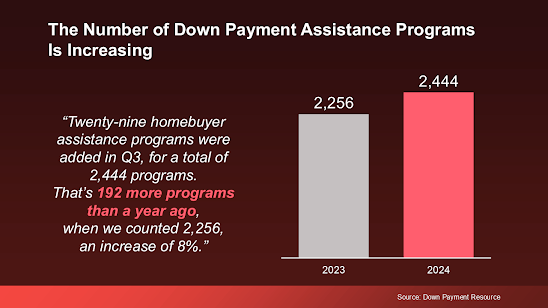
If you’ve been following mortgage rates lately, it might feel like you’re strapped into a roller coaster. Rates rise one day and dip the next, leaving many wondering what’s causing this constant fluctuation. Understanding what drives mortgage rate volatility can provide clarity and confidence as you navigate the housing market. Let’s break down some of the key factors influencing today’s rates and what it all means for you.
The Market’s Reaction to the Election
Election cycles often create waves in financial markets, and this year is no exception. Political uncertainty and economic expectations tied to election outcomes can have a profound impact on mortgage rates. As the National Association of Home Builders (NAHB) notes:
“. . . the primary reason interest rates have been on the rise pertains to the uncertainty surrounding the presidential election. Although the election is now complete, there continue to be growing concerns over budget deficits.”
Markets don’t just react to who wins an election but also to anticipated economic policies and their implications. For example, proposals related to government spending, taxation, and infrastructure investments can shift market sentiment, prompting investors to reallocate funds into safer assets like bonds. Since mortgage rates are closely tied to bond yields, this movement directly impacts what buyers pay in interest.
Additionally, broader factors like international tensions, supply chain disruptions, and trade policies add to the uncertainty. This ripple effect heightens market unpredictability, contributing to the daily fluctuations in mortgage rates we’re seeing.
The Federal Reserve and Economic Indicators
Two of the biggest economic factors influencing mortgage rates are inflation and unemployment.
The Federal Reserve (the Fed) has been working tirelessly to combat inflation by adjusting the Federal Funds Rate, which indirectly influences mortgage rates. While the Fed doesn’t set mortgage rates, its decisions create a domino effect throughout the economy. Typically, a reduction in the Federal Funds Rate leads to lower borrowing costs across the board, including mortgages.
In the Fed’s November 6-7th meeting, they assessed inflation trends and the strength of the job market. With inflation showing signs of moderation and unemployment remaining low, the Fed opted to cut the Federal Funds Rate again. This was expected, and much of the mortgage rate movement occurred before the meeting. However, even a slight dip in rates following the decision underscores the strong relationship between Fed actions and mortgage trends.
Global and Domestic Economic Pressures
It’s not just elections and the Fed that drive volatility—broader economic trends play a role as well. Here are some of the key pressures currently shaping mortgage rates:
Inflationary Trends: Although inflation has cooled from its pandemic-era highs, it remains a closely watched factor. Higher inflation generally leads to higher interest rates as lenders seek to offset the eroding value of future loan payments.
Labor Market Strength: The job market continues to show resilience with low unemployment rates. While this signals economic stability, it can also keep inflation elevated, complicating the Fed’s efforts to cut rates further.
Geopolitical Events: From international conflicts to supply chain challenges, global issues also affect investor sentiment and, by extension, mortgage rates. When uncertainty is high, investors often shift to safer assets like Treasury bonds, which influence mortgage rates.
What To Expect in the Coming Months
As we head into the new year, mortgage rates are expected to remain volatile, reacting to shifts in Fed policies, economic data, and the transition to a new administration. According to The Mortgage Reports:
“Today’s economic indicators come with mixed pressures on mortgage rates, and we’re likely to be in for a good amount of volatility as markets adjust and respond to the election . . .”
For potential buyers, this means staying informed is more important than ever. Even small changes in mortgage rates can significantly affect your monthly payments and overall affordability. For example, a 1% increase in mortgage rates could add hundreds of dollars to your monthly payment on a typical home loan.
That’s why having a team of trusted real estate and mortgage professionals is essential. They can help you understand how these rate shifts impact your buying power and guide you toward the best opportunities in today’s market.
Why Timing Matters
While it’s natural to hope for rates to drop further, waiting too long could come with risks. Rates may fall, but home prices could continue rising in many areas. Additionally, competition among buyers might intensify as affordability improves. Acting now, with expert guidance, allows you to secure a home at today’s prices while remaining adaptable to future rate changes.
Bottom Line
Mortgage rate volatility is driven by a combination of political, economic, and global factors. With so many moving parts, it’s essential to have an experienced team by your side to help you navigate these changes. A trusted real estate agent and mortgage lender can provide clarity and strategy, ensuring you make informed decisions based on your goals.
If you’re considering buying a home, don’t let today’s rate fluctuations hold you back. Let’s connect to discuss how current market trends impact your options and explore strategies to make your homeownership journey a success. Together, we can turn uncertainty into opportunity. realtor, best agent, real estate, Southlake, Keller, Haslet, home buyer, home seller, home value, Trophy Club, Fort Worth, new home, house, home selling, seller tips, 4wheeltorhomes, 4wheeltor, Crystal Zschirnt, Westlake, Roanoke, Justin, Northlake, Flower Mound, Argyle, Texas
💾 𝗡𝗼𝘄 | 𝗙𝗼𝗹𝗹𝗼𝘄
𝗳𝗼𝗿 𝗠𝗼𝗿𝗲 | 𝗦𝗵𝗮𝗿𝗲
𝘁𝗵𝗲 𝗞𝗻𝗼𝘄𝗹𝗲𝗱𝗴𝗲
𝗖𝗿𝘆𝘀𝘁𝗮𝗹 𝗭𝘀𝗰𝗵𝗶𝗿𝗻𝘁 | Premier REALTOR® | 𝟴𝟭𝟳-𝟴𝟳𝟰-𝟳𝟲𝟳𝟳 | 𝗖𝗭@𝗥𝗲𝗱𝗳𝗶𝗻.𝗰𝗼𝗺
#DFWRealEstate #DFWRedfin #DFWEliteRealty #DFWHomes #4wheeltor #4wheeltorhomes








.jpg)
.jpg)
.jpg)